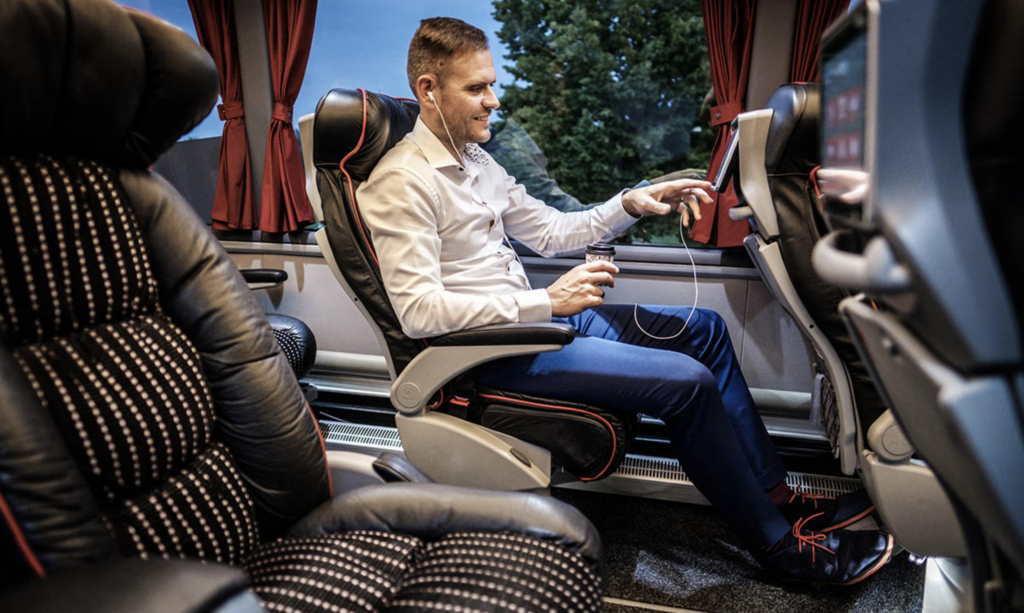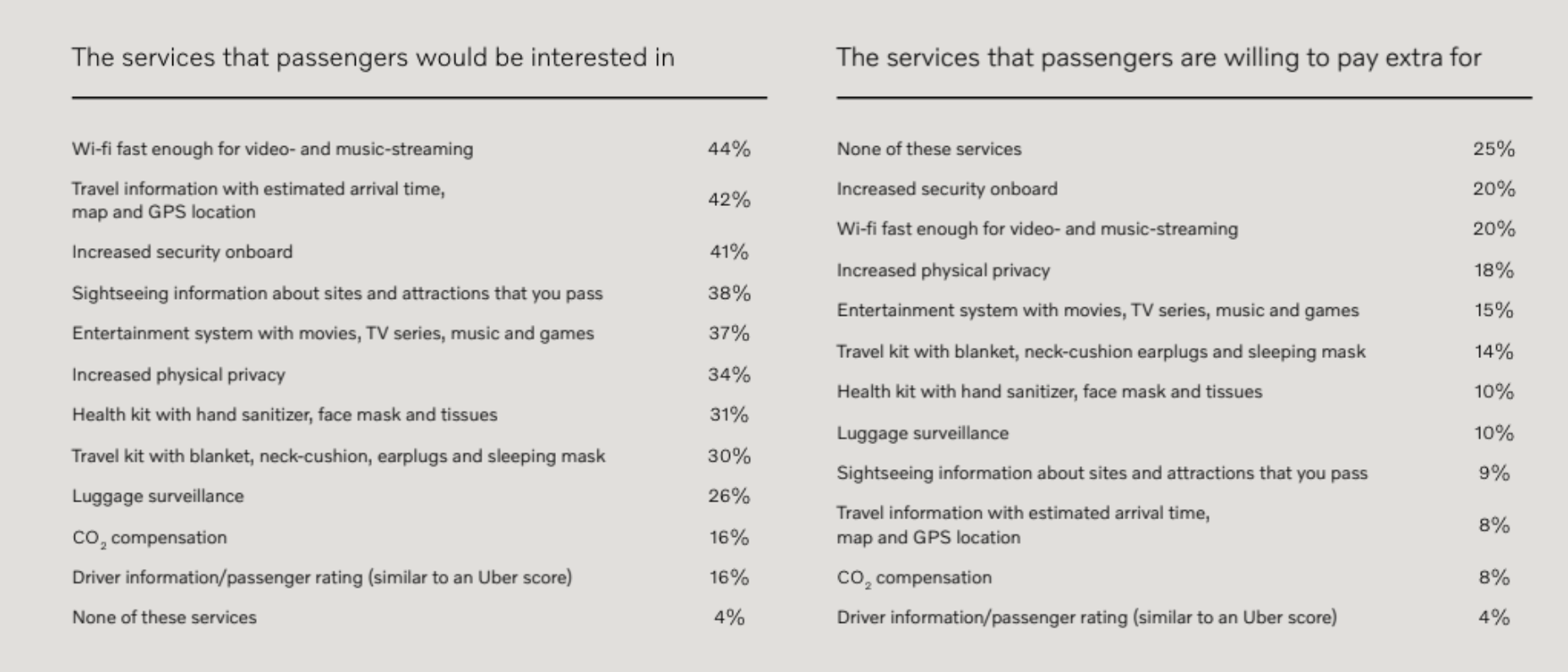To celebrate this year’s World Wi-Fi Day we, at RebelRoam, wanted to find a definitive answer to an important question in the intercity coach (‘motorcoach’ if you are from North America) industry. What is the most important entertainment feature onboard to modern passengers: built-in infotainment system or free high-speed Wi-Fi?
Firstly, let’s clarify the two terms. When we are referring to built-in infotainment system we are talking about the seatback/headrest screens that typically offer a pre-selected collection of movies, TV series, games and music.

On the other hand, when referring to free high-speed Wi-Fi we are, of course, talking about onboard Wi-Fi that is fast and stable enough for passengers to stream their favorite music and video content (Netflix, YouTube, Prime Video and TikTok) from a personal device.

In this post we will solely focus on passenger preference as opposed to side-by-side pros and cons comparison to bus operators (carriers). If the later topic is also of interest to you, drop us a comment on LinkedIn or an email [email protected] and we will consider dedicating a future post to this question.
Before we begin, naturally, another question may come to mind: why are either of these two features important to passengers on a long distance bus journey?
The most recent Ericsson Mobile Report estimated that by the end of 2024 video content streaming will make up nearly 80% of all internet traffic. The volume of data consumed by video streaming has increased over 4.5 times since 2018. This indicates our unquenching thirst for streaming more of the latest and our favorite content at home, on a lunch break, on holiday or on a bus journey.
So what, you may say, passengers also love reading, knitting, chatting and can spend a bus journey without reaching for a smart device. Sure, most of us are able to stay offline for a short period of time. However, considering the optimal intercity bus journey is somewhere between 2-4 hours (Beria and Bertolin, 2019) and the world’s longest bus route (called Transoceánica) being a whopping 102 hours or 4+ days in duration, it is inevitable that your passengers will reach for their smartphone, tablet or a laptop.
Of course, there are marginal cases where bus operators cater to only domestic travelers in a country with affordable mobile internet and great cellular coverage. In such cases where all of these are true passengers will likely opt for using their personal mobile internet subscription. But in this instance we are considering more typical bus operations.
Now let’s look at what the broader industry thinks. Back in 2017, BusBud, an online intercity coach ticketing website, conducted a passenger survey keen to find out what onboard features/amenities riders most valued and were prepared to pay for. They were asked to rank amenities on a scale of 1 – 7 (from least to most important). Onboard Wi-Fi was ranked 4th most important amenity only surpassed by such essentials as AC, comfortable seats and toilet.
More recently, Volvo Buses surveyed 9000 passengers in 9 countries across the globe to better understand their demands and expectations from modern coach travel experience. As the top 1 in-demand onboard service respondents identified “Wi-Fi fast enough for video- and music-streaming” while also being the top service participants are being prepared to pay extra for. Predictably, readiness to pay for staying connected increased to 37% among those surveyed aged under 30.
In contrast, “Entertainment system with movies, TV series, music and games” is ranked as only the 5th most important service onboard.

To have a complete view of the situation, let’s hear what passenger preference trends have been noted by bus operators. Take for example, Lux Express, an international long distance coach carrier that transports 3m passengers per year across 7 nations. For many years, Lux Express has been offering its passengers side-by-side access to onboard multimedia screens and free high-speed Wi-Fi. What they have observed is that usage of onboard multimedia screens is slowly decreasing but still being an important differentiator, especially for passengers with kids. The usage has decreased from about every 2nd passenger 10 years ago to every 4th passenger now. At the same time, the popularity of onboard WiFi among passengers is growing with close to 9 devices connecting to Wi-Fi for every 10 passengers. And when it comes to Wi-Fi content then social media and video based services such as YouTube, Instagram, Facebook and TikTok dominate the data consumption chart.
From the above data, we can draw a conclusion that free high-speed Wi-Fi has grown in popularity among modern day intercity coach passengers over the last few years with only such non-negotiable necessities as toilet and AC being ranked more important to onboard experience of a lifetime. It is also worth highlighting that when previously passengers expected simply Wi-Fi to be available then nowadays passengers are clearly expecting to be able to stream favorite video and audio content from their device while connected to the onboard Wi-Fi network.
About RebelRoam
RebelRoam is a market leading passenger Wi-Fi optimisation company specialising in coach, cruise and rail verticals servicing a total of over 4,000 vehicles worldwide including Flixbus, Go-Ahead Group, The Travel Corporation, Uniworld and many more.
Learn more about RebelRoam at www.rebelroam.com
